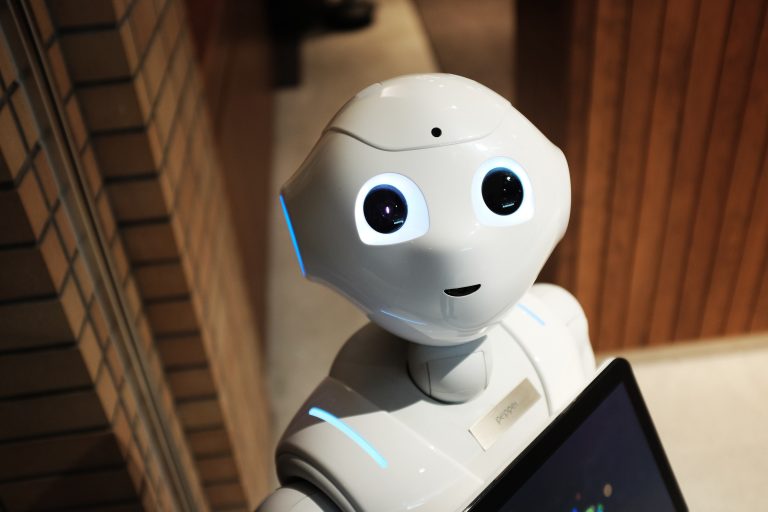Published on: March 29, 2023 Updated on: January 24, 2024
The 3 stages of AI development: The evolution of A robotic mind
Author: Alex Tyndall

The human mind is an incredible piece of organic machinery – as oxymoronic as that sounds. So it’s no wonder that we as humans are interested in studying it and replicating it as accurately as possible. It’s in our nature to want to know how things work.
The discussion of artificial intelligence (AI) has been around for millennia. It appears in Greek mythology in the form of the bronze giant, Talos. At the turn of the 17th century, we can find mentions of an ‘automaton’, and by 1886, we were writing stories about robots that lived as humans.
However, the field of AI was not properly investigated until 1956, and even then, the process was incredibly slow-going. Now, in the 21st century, we are inundated with AI tech, which is designed to help us in our everyday lives.
However, a question still remains. Just how far will all of this go? To figure that out, we need to look at the proposed stages of AI learning – the evolution of artificial intelligence.
Let’s jump into it.
What is artificial intelligence?
AI is a branch of computer science interested in developing intelligent machines that can think and act like humans. Data scientists feed AI machines large sets of data to help train them to identify patterns and work through logical reasoning to mimic human capabilities.
So that the machines can achieve the best results possible, they are fed “big data” – enormous, complex data sets that generally cannot be sorted through without the use of a computer.
For example, imagine watching every single film ever created. Or reading every single Twitter thread. It is practically impossible for a human to achieve, but it provides a fantastic opportunity for an AI algorithm to learn and process data on a massive scale.
The stages of artificial intelligence
There are 3 proposed stages when it comes to machine learning:
- Artificial Narrow Intelligence
- Artificial General Intelligence
- Artificial Super Intelligence
Together, they describe how an AI gathers, sorts, and learns from information with the aim of replicating how a human’s brain thinks, plans, and creates.
Currently, the scope of what an AI can do is still relatively limited, but new advancements are pushing us out of the region of narrow intelligence and further into general intelligence.
Stage 1: Artificial narrow intelligence (ANI)
Machines with ANI have a very limited range in what they can do. They are designed for maybe one or two specific tasks, and they cannot operate outside of their specialized field.
This type of AI is also known as ‘weak AI’ – not because they are weak in its capabilities, but because it cannot progress any further than what it was first programmed to do.
However, more advanced forms of ANI make use of deep learning algorithms, which begin to identify patterns and trends.
A common example of the use of deep learning comes from the healthcare industry, where AI is trained to identify a range of different potential hazards, such as tumors or cancers.
In this scenario, the AI would be provided with training data. It would then analyze this and use any provided tags to begin associating patterns. Over a short amount of time, with the capability to look through hundreds of images in seconds, it begins to build layers of information throughout its neural networks until it can accurately identify a target over and over again.
Examples of ANI include:
- Self-driving cars and the automation of transport
- Virtual assistants such as Amazon’s Alexa or Apple’s Siri
- Sybil – a lung cancer detection AI developed by the Massachusetts Institute of Technology
- Chatbots
- Board-game bots like AlphaGo (which beat one of the best Go players in the world in 2016)
AlphaGo, developed by DeepMind Technologies, would be considered as a ‘strong-narrow’ AI. It is the very best of the best at what it does, to the point it has rivaled and even beaten the best human competitors. But that’s about it. You would need an entirely new AI system to play a different game, and it would take years of calibrations and tests to get it to a world-class standard.
Stage 2: Artificial general intelligence (AGI)
It’s believed that we’re currently in the process of moving into the AGI phase of AI technology as we develop more and more ways to train AI to think and problem-solve in the same way as human beings.
The goal for this second of the stages of AI is to solve problems it has not been trained to and work through logical reasoning in rule-based systems to accomplish a task, as a human would. For this reason, AGI is also known as strong AI, as it has uses across multiple areas.
Whilst the vast majority of AI machines are still in the ANI stage, there are certain examples of the line between ANI and AGI beginning to blur.
For example, ChatGPT is a natural language processing tool that is beginning to go beyond the realms of a normal chatbot by mimicking the way in which humans speak and write with context awareness. It does not connect to the internet, but rather it takes the information it has learned through its training to:
- Generate human-like responses to questions
- Write papers
- Work through hypothetical scenarios
- Provide ideas
It has 175 billion parameters, making it one of the most advanced and powerful language tools yet. But even this example is very limited, as there’s still an enormous way to go before AI can demonstrate real decision-making skills that rival that of the human brain, even though AGI has cognitive abilities.
AI that is able to assess the real world and understand it as well as a human would have to be put against the Turing Test (AKA The Imitation Game, devised by Alan Turing in the 1950s). If a human experimenter was unable to differentiate between which participants in a study were human and which were AI, then the machine would pass the test.

For now, AGI remains mostly fictional. It is estimated that robots with general capabilities, able to operate in a number of fields with a wide range of datasets, won’t be around until at least 2040, if not later. However, growth in the industry seems to be exponential, so it’s difficult to say for certain.
Stage 3: Artificial super intelligence (ASI)
The proposed final stage of evolution hypothesized by AI researchers is the moment when AI becomes self-aware and surpasses the boundaries of human intelligence.
In this moment, which is known as singularity and transcendence, we will either not be able to tell the difference between humans and AI in any way, or we will be completely dependent on machine intelligence to provide direction and prediction.
The possibilities here are enormous, and it’s the reason why so many films and TV shows focus on the potential threat of an AI insurgency.
Conclusion
It’s simultaneously fascinating and alarming to see the progression of AI technology through distinct stages in real time. With every new data set and each line of code, these machines become more and more intelligent. Is it possible that AI surpasses human intelligence? Likely not anytime soon, but reaching human intelligence, yes. Their electrical impulses spark like synapses as, piece by piece, they learn more about us, the world, and themselves.
Is it all a bit dramatic? Perhaps. But the thought that one day we’d be able to fly through the air, talk to someone on the other side of the globe, or interact with a person who doesn’t even exist all used to be fictional.
The future of AI is bright, but that doesn’t mean the future of humanity is dark. We’ll find a way to live together, to help one another. No one’s pulling the plug any time soon – on either of us.
Want to know more about AI technology? Stay up to date with the Top Apps blog as we explore everything there is to know about AI.
Alex Tyndall
With a passion for exploring the latest apps and software, she brings a wealth of knowledge to her role as a professional writer at TopApps.ai.
Recent Articles

Learn how to use advanced search tools, newsletters, and reviews to uncover the perfect AI-focused podcast for you.
Read More
Explore the top beginner-friendly AI podcasts. Our guide helps non-techies dive into AI with easy-to-understand, engaging content. AI expertise starts here!
Read More
Explore the features of The AI Podcast and other noteworthy recommendations to kick your AI learning journey up a notch. AI podcasts won’t...
Read More